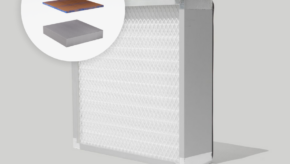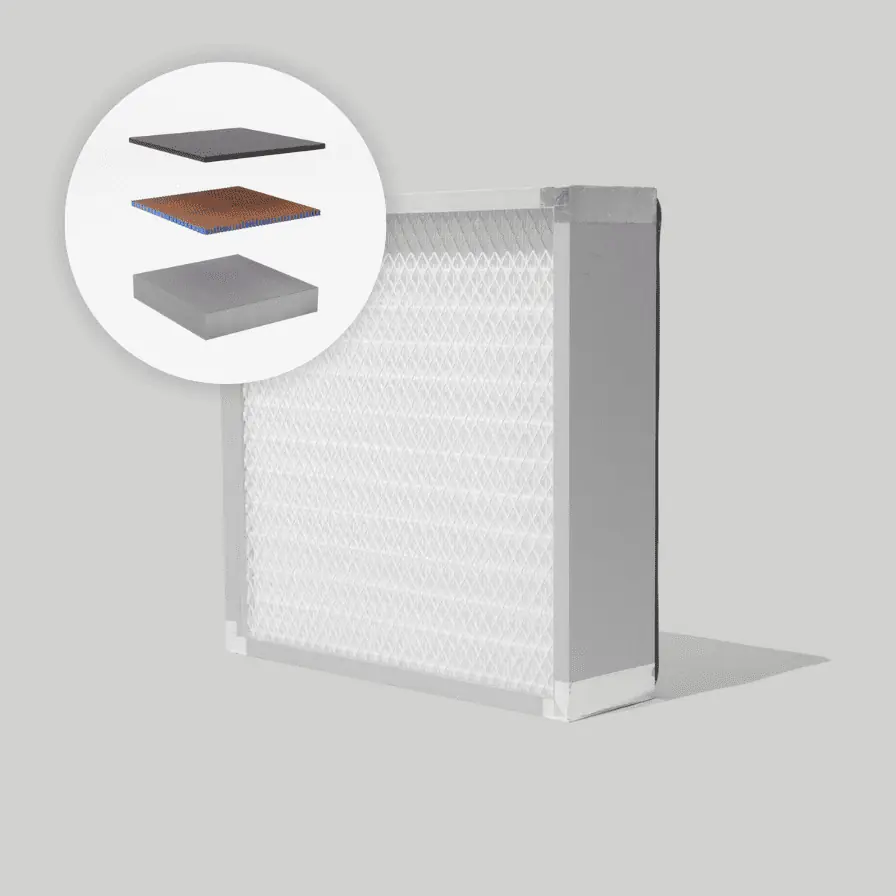The sticky feeling that you get on your skin when you are indoors in the air conditioning but still experiencing that heavy temperature that leaves your body warm can be your home’s humidity at play. When discussing home temperatures and climates, humidity is often not something that is talked about, but it is something that is important within your home. Indoor air quality is directly impacted by a number of factors inside the home including humidity levels that can spark poor air quality and create the ideal environment for pollutants to be produced within the air.
When humidity levels in a home rise and/or fall it can start to affect the air quality and cause respiratory problems that will strike in the body of those exposed to this environment. This can be shocking to learn as most people attribute poor indoor air quality to allergens such as pollen, dust, and other contaminants that will enter into the home and significantly reduce the quality of the indoor air. However, humidity is increasingly playing a role in the quality of the air in the home and is something that needs to be carefully monitored throughout this environment.
In this article we are going to discuss the differences between humidity vs relative humidity and understand the ideal level of humidity that your home should maintain in this environment.
What Does Humidity Mean – Relative Humidity vs Humidity
Humidity is the water vapor mass that is contained within the total mass of dry air inside a specific enclosed environment. The levels of humidity within an indoor space can lead to mold growth, allergens in the air, and health issues like throat, nose, and eye irritation. Humans are very sensitive to humidity due to the fact that human skin relies on the air to remove moisture. When the air reaches 100 percent relative humidity, sweat that is produced from the body will not evaporate into the air, and as a result the human body will feel much hotter that the actual temperature of the body.
The humidity that is present within the air of an indoor space can be measured in several different ways – relative humidity, absolute humidity, or dew point. You may be wondering what is humidity vs relative humidity? Relative humidity is the most common measurement for humidity that is expressed as a percent and measures the absolute humidity relative to the maximum for the temperature. As the temperature in the indoor environment rises and becomes hotter, the more water the air can contain that will increase humidity levels.
Is High Humidity Bad Indoors?
Did you know that it is recommended to keep humidity levels in your home to between 35 and 60 percent? When humidity reaches levels that are above that recommended 60 percent, it can lead to many issues within the home. The heightened levels of humidity indoors are likely to increase health issues such as sweating, increased respiration, altered blood circulation, and excessive sweating.
When the home reaches a high level of humidity it opens the door for issues to occur such as mold/mildew growth, insect infestations, and even damage to furniture and appliances. Mold is one of the biggest issues from high humidity levels, due to the fact that as mold forms in the home it can produce mold spores into the air that can significantly alter the air quality and health of those exposed.
What Causes High Humidity in a House?
The humidity level indoors in a home can fluctuate dramatically by the internal factors within the home. From moisture intrusions in the home such as showering, boiling water, drying laundry, or any type of input of moisture into the indoor space. There are many different causes of high humidity levels in a home and this will include the following main causes.
- Showers and bathrooms are often one of the most humid places in a home that harbors the most moisture in the space. A running shower or a running faucet can all lead to the development of moisture into the enclosed space that will raise the humidity level. When the moisture mixed with the air as water vapor, it will make contact with mirrors and windows and leaves condensation on these surfaces
- Cooking or boiling water are simple acts that we do nearly every single day. However, this seemingly meaningless task can create issues within the humidity in a home. When there is improper ventilation within the indoor space it can lead to condensation buildup that will in response increase humidity.
- Lack of Ventilation will dramatically impact poor indoor air quality as stale contaminated air will become trapped in the home and increase humidity within the space. A home that has increased ventilation is able to effectively shift out the contaminated air that is present indoors and replace it with fresh outdoor air, which will minimize pollutants in the air and help reduce humidity levels.
- Building structure issues and leaks will allow water to enter into the environment which will elevate the humidity levels in this space. Porous walls and leaks in the building can significantly compromise structural dampness and lead to unwanted humidity in the indoor environment.
- Drying Wet Clothing can release up to 2 liters of extra water into the air that will affect the levels of humidity dramatically. When you place clothing in a dryer you are actually throwing about a quarter of a bucket of water into the air that has to go somewhere. This moisture will appear as steam and water vapor that will dry on the walls of your home which can overtime produce mold in this environment.
What Causes Low Humidity in a House?
Although we tend to focus on the major issue of increased humidity in our indoor environments, lower humidity levels can also become problematic to the environment and the health of those exposed. Low humidity levels in a house are typically associated with the winter months where the humidity levels drop because of the cold air that holds less moisture than warm air. This low level of humidity indoors will cause dry skin and hair, as well as an increasing susceptibility to colds and other respiratory illnesses.
Measuring Humidity
Measuring the humidity level inside your home has become easier through the use of a humidity monitoring device called a hygrometer that is designed to monitor both indoor and outdoor humidity levels. A hydrometer that is most popular is that of the analog hydrometers that use a moisture-sensitive material that is attached to a coil spring. The spring on this hydrometer controls a needle on the dial that allows them to easily read the levels of moisture in the environment. This type of humidity measuring device is easy to use and is generally inexpensive. However, this measuring device for humidity also has its downsides – an inaccuracy between plus or minus 10.
How to Get Rid of High Humidity in House
The humidity level in your house can be determined by a designated measuring device or it could even be monitored by the human body and the effects that it will place on your health when humidity levels are at a high indoors. High levels of humidity can influence your health, your sleep and even effect your home and its air quality within this space. When it comes to combating this high level of humidity inside the space, there are a couple methods you can implement into the environment, this includes the following methods.
- Dehumidifier: The easiest and most effective way to combat high humidity levels that you face inside of your home is through the use of a dehumidifier. A dehumidifier is an affordable solution that is able to bring humidity levels back down to the ideal humidity level between 40 and 60 percent indoors.
- Repair Leaks and Moisture Intrusions: Leaks that are allowing water intrusions into your home need to be repaired and fixed immediately to help reduce humidity levels.
- Dry Clothing Outside: Drying clothing inside will help to increase indoor humidity levels as the water is pushed into the air during the drying process. This release of water from wet clothes will aid in the increase of humidity in the environment.
- Increase Air Ventilation: Ventilation inside of a home can play a major role in humidity buildup. Improper ventilation will reduce air flow and increase humidity in the space. When it comes to high humidity you want as much air flow as possible to dry the moisture in the air.
Air Purifier vs Dehumidifier for Humidity Levels Indoors
The process of regulating humidity levels back to desirable levels within an indoor air space can be accomplished through the use of air devices that help to bring down humidity levels that have reached too high of heights inside. Often times, many consumers are greatly confused on the differences that an air purifier and a dehumidifier, or air purifier vs humidifier, provide to the indoor air space. The name dehumidifier gives way to its capability to bring down the humidity in an enclosed space, however, air purifiers are also believed to provide this same capability to your air space.
Dehumidifiers are specifically manufactured for their capability to reduce the excess moisture that is present in the indoor air space and eventually regulate the humidity back to ideal levels. The device works by sucking moisture out of the air and collecting it inside an internal bucket in the air system. This is the sole job and function of a dehumidifier – to remove high humidity’s from the home, and this means it will not clean the air of contaminants that can be created in the indoor space from the high humidity levels like mold and mold spores.
Air purifiers, on the other hand, are designed to remove harmful airborne contaminants from the air that passes through the different filtration stages in the air purifier. Air purifiers, depending on the technology that is utilized in the device, can remove certain airborne pollutants from the air including odors, particles, allergens, and even microorganisms (mold spores, bacteria, and viruses). After an indoor environment has undergone high humidity levels it can create an ideal environment for certain pollutants to form and collect in the indoor space. High humidity levels will elicit the production of mold and mold spores within the space and this pollutant will significantly taint the air quality in the indoor environment.
An air purifier, like the EnviroKlenz UV Air Purifier, is able to effectively clean and remove pollutants from the air that are produced from high humidity levels such as mold and mold spores. The EnviroKlenz UV Air Purifier utilizes a two-stage filtration, a patented earth mineral technology air cartridge that will remove noxious odors and chemicals from the air, along with a hospital-grade HEPA filter for particulate removal as small as 0.3 microns in size. This air purifier contains ultraviolet germicidal radiation (UV-C) lights that shine above the HEPA filter to kill microorganisms (mold and mold spores) that were collected on the filter to effectively clean the indoor air quickly.








